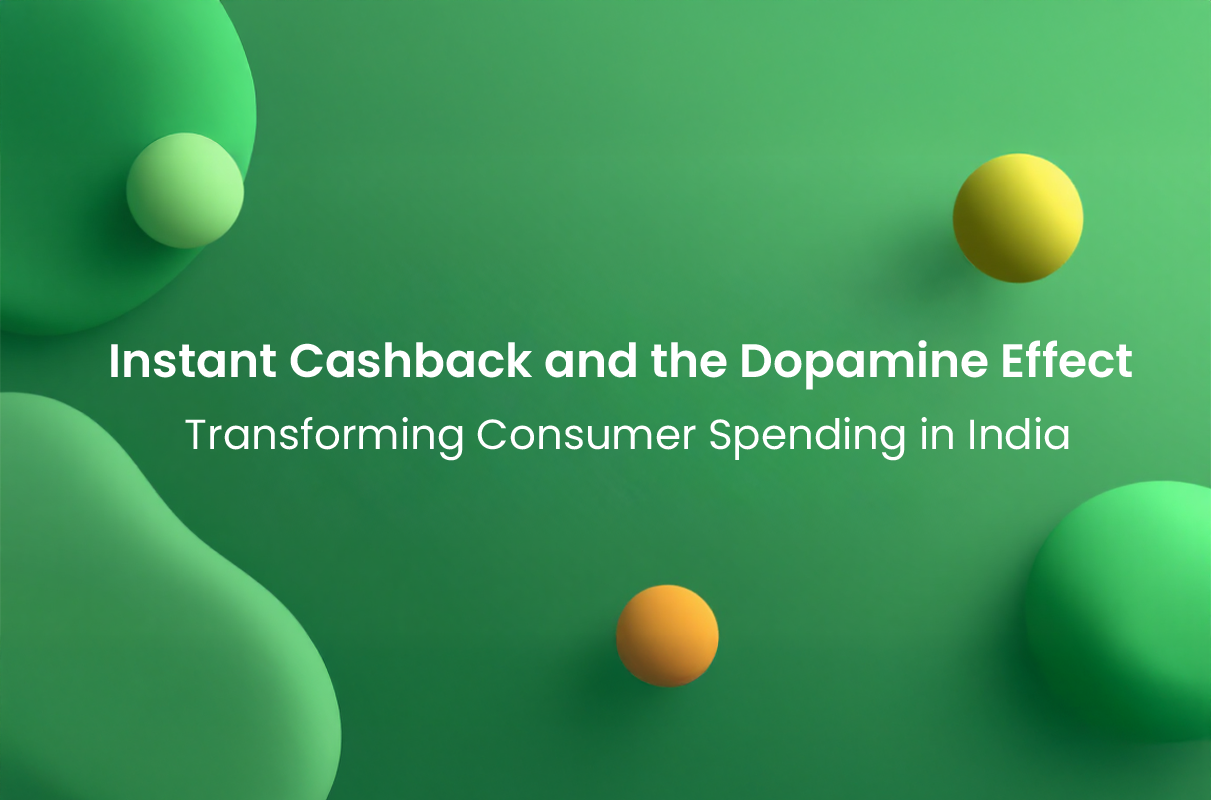
Instant Cashback and the Dopamine Effect: Transforming Consumer Spending in India
Explore how instant cashback leverages dopamine-driven rewards to boost consumer spending, loyalty, and engagement in India’s dynamic market.
Instant Cashback and the Dopamine Effect: Transforming Consumer Spending in India
Instant cashback has emerged as a powerful tool in India’s consumer promotions and loyalty programs, deeply influencing spending behavior through the neurochemical dopamine effect. As RewardPort, India’s specialist in consumer promotions, channel incentives, and employee rewards, we recognize that the immediacy of cashback taps into consumers’ desire for instant gratification, enhancing both engagement and loyalty. This article explores the underlying psychology, market trends, and RewardPort’s strategic approach to harnessing instant cashback for impactful business outcomes.
The Dopamine Effect: Why Instant Cashback Works
Instant cashback generates a strong dopamine response — a neurotransmitter associated with pleasure and reward — providing an immediate sense of financial gain and satisfaction. This effect encourages consumers to make more frequent purchases, often increasing transaction sizes and brand loyalty. The psychological gratification of instant rewards creates a positive feedback loop, motivating consumers to engage repeatedly with brands offering these incentives.
Market Context: Rapid Growth of Instant Cashback in India
The Indian cashback market is on a robust growth trajectory. Valued at approximately USD 7.6 billion in 2024, it is forecasted to nearly double to USD 14.3 billion by 2029, growing at a compound annual growth rate (CAGR) of 13.4%. This growth reflects expanding digital payment adoption, rising disposable incomes, and increasing consumer preference for value-driven shopping experiences. The number of online shoppers is expected to exceed 270 million by 2024, growing at over 22% annually, further fueling cashback program participation.
Key Sectors and Use Cases
Instant cashback is widely deployed across various sectors: – Consumer Promotions: Platforms like Paytm and Flipkart leverage instant cashback during festivals and sales, driving spikes in transaction volumes and brand engagement. – Loyalty Programs: Credit cards from leading banks offer up to 5% instant cashback, incentivizing repeat card usage and enhancing customer lifetime value. – Channel and Partner Incentives: Businesses use instant cashback to energize channel partners and dealers, improving sales and inventory movement. – Experiential and Wellness Rewards: Integrated cashback rewards now extend to experiences like travel, dining, and health services, appealing to the aspirational Indian consumer.
RewardPort’s Perspective: Crafting Effective Instant Cashback Campaigns
At RewardPort, we design instant cashback campaigns that balance dopamine-driven engagement with strategic marketing goals — from acquisition to loyalty and referral. Our plug-and-play cashback engine allows brands to customize reward structures, ensuring seamless redemption and real-time gratification. By integrating data-driven personalization, we help our clients optimize cashback offers that resonate uniquely with diverse customer segments. Our case studies reveal impactful outcomes: a leading food brand used QR inside-pack cashback with assured rewards plus a high-value appliance draw, significantly boosting repeat purchases. Another consumer electronics campaign combined assured cashback with premium gifts, accelerating stock movement during festive seasons.
Trends Shaping Cashback Programs 2025 and Beyond
– Personalization: Behavioral segmentation enhances relevance and increases redemption rates. – Omnichannel Integration: Bridging offline and online presence ensures wider and more frequent consumer touchpoints. – Experiential Rewards: Consumers increasingly prefer cashback linked to travel, dining, and wellness, which strengthen emotional brand connections. – Dealer & Channel Engagement: Tailored instant cashback schemes for partners improve incentivization and business outcomes.
Instant cashback in India is more than just a financial incentive — it’s a psychological trigger that unleashes the dopamine-driven reward response, boosting consumer spending, loyalty, and partner engagement. By harnessing this effect, RewardPort empowers brands and businesses to create compelling, outcome-driven campaigns that align with evolving market dynamics and consumer expectations.

Instant Rewards: Unlocking the Power of ‘Now’ in Consumer Psychology for Indian Marketers
Explore why instant rewards drive consumer engagement in India. Learn how RewardPort’s solutions leverage ‘now’ to boost loyalty, sales, and channel incentives.
Instant Rewards: Unlocking the Power of ‘Now’ in Consumer Psychology for Indian Marketers
In today’s fast-paced Indian market, the value of instant rewards—immediate incentives delivered at the point of engagement—has risen dramatically. Consumers increasingly expect gratification within moments, not days or weeks. This shift is reshaping consumer psychology and driving new dynamics in loyalty programs, promotions, and channel partner incentives. For B2B marketers, trade leaders, and HR/channel heads, understanding why “now” matters can unlock powerful engagement and competitive advantage.
The Psychology Behind Instant Rewards
Psychologically, instant rewards leverage the primal human desire for instant gratification, creating immediate emotional impact. In India especially, where digital adoption and mobile commerce are booming, consumers exhibit heightened impulsivity and preference for quick results. Studies show that the “10-minute delivery” model in quick commerce (Q-commerce) is a tangible reflection of this mindset, prioritizing speed over price sensitivity.
This instant gratification triggers dopamine release, reinforcing positive buying behavior and increasing repeat purchase likelihood. Social media amplification, scarcity messaging, and influencer endorsements intensify this effect by creating FOMO (fear of missing out) and emotional urgency that prompt faster decisions.
Trends Shaping Instant Reward Campaigns in India
Loyalty programs are evolving from conventional points-based schemes to highly personalized, AI-driven, instant reward models. Leading Indian platforms like Swiggy, Flipkart, and Paytm have revamped their reward structures to emphasize cashback, digital vouchers, and experiential perks that consumers can redeem immediately.
Cashback campaigns deliver concrete, instant value, rapidly outpacing delayed reward schemes. Integration with mobile wallets and UPI ensures frictionless redemption, driving strong consumer satisfaction and retention. On the channel partner front, instant digital rewards and wellness incentives motivate dealer participation effectively, enabling businesses to meet sales targets faster.
RewardPort’s Perspective: Delivering Instant Value at Scale
At RewardPort, our solutions are designed to harness the power of instant rewards tailored to Indian consumers and business ecosystems. Our plug-and-play modules, such as Freebucks—combining point accumulation with instant redemption—perfectly align with the now-first consumer mindset.
Our AI-powered personalization tools optimize reward delivery timing and relevance, contributing in some campaigns to a repeat purchase uplift nearing 27%. Whether through cashback engines, gamification with branded digital games, or WhatsApp-based instant win flows, RewardPort enables brands to create moments of delight and immediate value.
RewardPort’s extensive reward catalog—featuring movie tickets, food vouchers, travel experiences, wellness services, and multi-brand gift vouchers—caters to diverse Indian demographic segments. This breadth empowers marketers to match instant rewards with customer preferences closely, deepening engagement and loyalty.
Case Study Insights
Leading brands enabled by RewardPort have successfully driven up sales and engagement by embedding instant rewards into their campaigns. For example, a consumer goods campaign combining assured cashback with high-value draws saw significant repeat purchase and penetration growth. Channel partner incentive programs leveraging instant digital rewards achieved rapid dealer activation and sustained trade engagement.
Future Outlook: Instant Rewards and Beyond in 2026+
Looking ahead, instant rewards will become even more sophisticated through AI-enhanced hyper-personalization and integration with emerging tech like AR/VR experiential incentives. The consumer’s expectation for seamless, immediate value will continue to accelerate, particularly among India’s digitally native youth and urban families.
Marketers and trade leaders who invest in instant gratification-driven programs will not only capture attention and loyalty but also unlock higher lifetime value and channel advocacy in India’s competitive markets.
Instant rewards are not just a trend but a fundamental shift in consumer psychology that Indian marketers must embrace. At RewardPort, we provide the tools, insights, and rewards catalog to make “now” a powerful ally in building engagement, sales, and loyalty. By prioritizing instant gratification within your promotions and channel incentives, you can meet evolving consumer and partner expectations head-on and build lasting business advantage through 2026 and beyond.
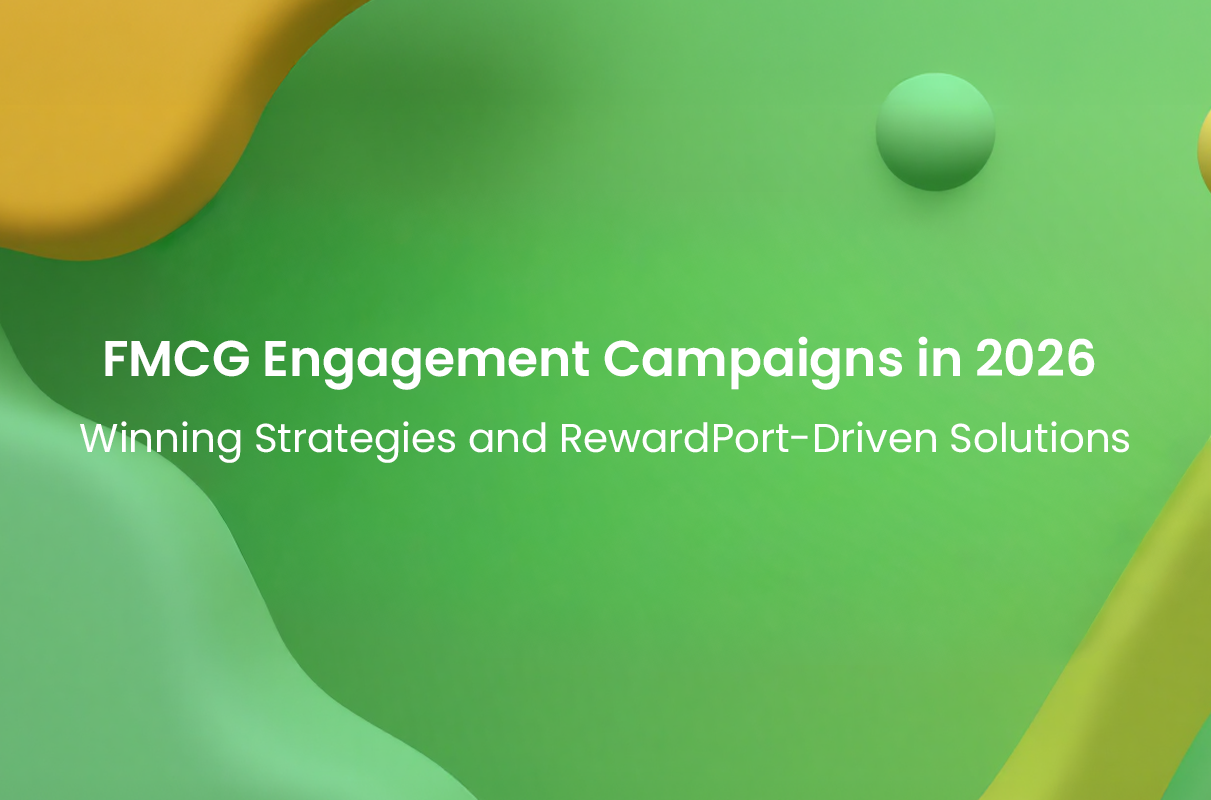
FMCG Engagement Campaigns in 2026: Winning Strategies and RewardPort-Driven Solutions
Explore top FMCG engagement campaigns in India for 2026 and how RewardPort’s loyalty and incentive solutions drive impactful consumer and channel rewards.
FMCG Engagement Campaigns in 2026: Winning Strategies and RewardPort-Driven Solutions
India’s FMCG sector in 2026 is marked by a dynamic shift towards digitally enabled, omnichannel engagement campaigns that harness personalized rewards and robust channel incentives. As consumption patterns evolve across urban and rural markets, brands that excel are those integrating technology-driven loyalty programs with compelling experiential rewards. RewardPort stands at the forefront of this transformation, powering campaigns that connect deeply with consumers, trade partners, and employees alike.
The ongoing growth in digital ad spend, expected to represent over 60% of FMCG marketing budgets by 2026, reflects brands’ commitment to mobile-first, video-rich content alongside traditional platforms. This omnichannel approach strengthens brand recall and maximizes reach across India’s diverse population. RewardPort’s turnkey solutions — from data-driven points loyalty and cashback engines to gamification and experiential rewards catalogues — align perfectly to activate these strategies effectively.
What Works in 2026 (Playbook)
Engagement campaigns that succeed in 2026 share several core traits:
• Omnichannel Integration: Combining TV, digital, print, and mobile amplifies engagement rates up to 35% higher than single-medium campaigns. RewardPort enables seamless coordination across channels with plug-and-play loyalty modules.
• Personalized Loyalty & Instant Gratification: Data-driven segmentation fuels instant cashback, tiered multipliers, and digital wallet redemptions that retain and upsell consumers.
• Channel Partner Incentives: Dealers and retailers gain from tailored point programs, wellness benefits, and curated experiential rewards to boost distribution and motivation.
• Experiential Rewards: Wellness retreats, holiday packages (via RewardPort’s VacPac and AirPac catalogs), and entertainment vouchers foster emotional loyalty beyond transactional benefits.
• Influencer & Celebrity Engagement: Integration with influencer campaigns and celeb endorsements elevates trust and reach—strategies supported by RewardPort’s digital backend for instant reward delivery.
For FMCG marketers and trade leaders, this approach translates into measurable uplifts in repeat purchase, channel activation, and brand advocacy.
RewardPort Case Studies and Solutions in Action
While the 2026-specific FMCG case data is emerging, RewardPort’s ongoing partnerships reveal the effectiveness of its campaign models:
• Multi-Channel Loyalty for a Leading Personal Care Brand: Implementing point accrual combined with tiered rewards boosted repeat purchases by over 25%, leveraging RewardPort’s Freebucks points system with instant redemption.
• Channel Partner Incentives for a Food FMCG Brand: A dealer loyalty program offering quarterly redemption points, wellness vouchers, and merchandise rewards resulted in heightened trade engagement.
• Scratch & Win Campaign with Assured Prizes: For a prominent snack manufacturer, combining assured food vouchers and grand holiday prizes (from RewardPort’s curated catalog) stimulated a 20% uplift in consumer trial and repeat purchase during festive seasons.
• Gamified Referral Program: A beverage brand utilized RewardPort’s gamification engine alongside referral rewards yielding rapid network growth and acquisition lift.
Why RewardPort Is the Partner of Choice
RewardPort’s comprehensive plug-and-play modules provide FMCG brands with the agility to deploy complex campaigns rapidly while maintaining rigorous tracking and redemption transparency. The extensive rewards catalog caters to diverse consumer preferences—from OTT and movie tickets popular with youth to multi-brand vouchers and wellness experiences favored in families and trade partners. Real-time analytics enable course correction and optimization for maximum ROI.
In a market where engagement campaigns must balance fun, attainability, and strategic impact, RewardPort delivers proven models that adapt to evolving consumer behaviour and channel dynamics.
FMCG engagement campaigns in India for 2026 are defined by a blend of digital sophistication, personalized loyalty, and experiential incentives. Brands that integrate these elements effectively benefit from enhanced consumer retention and energized channel partners. RewardPort’s full-suite solutions—spanning loyalty programs, cashback, gamification, and multi-category rewards—equip FMCG marketers and trade leaders to meet these challenges head-on with impactful, measurable campaigns. As the industry moves forward, partnering with RewardPort ensures that engagement strategies remain innovative, scalable, and consumer-centric.
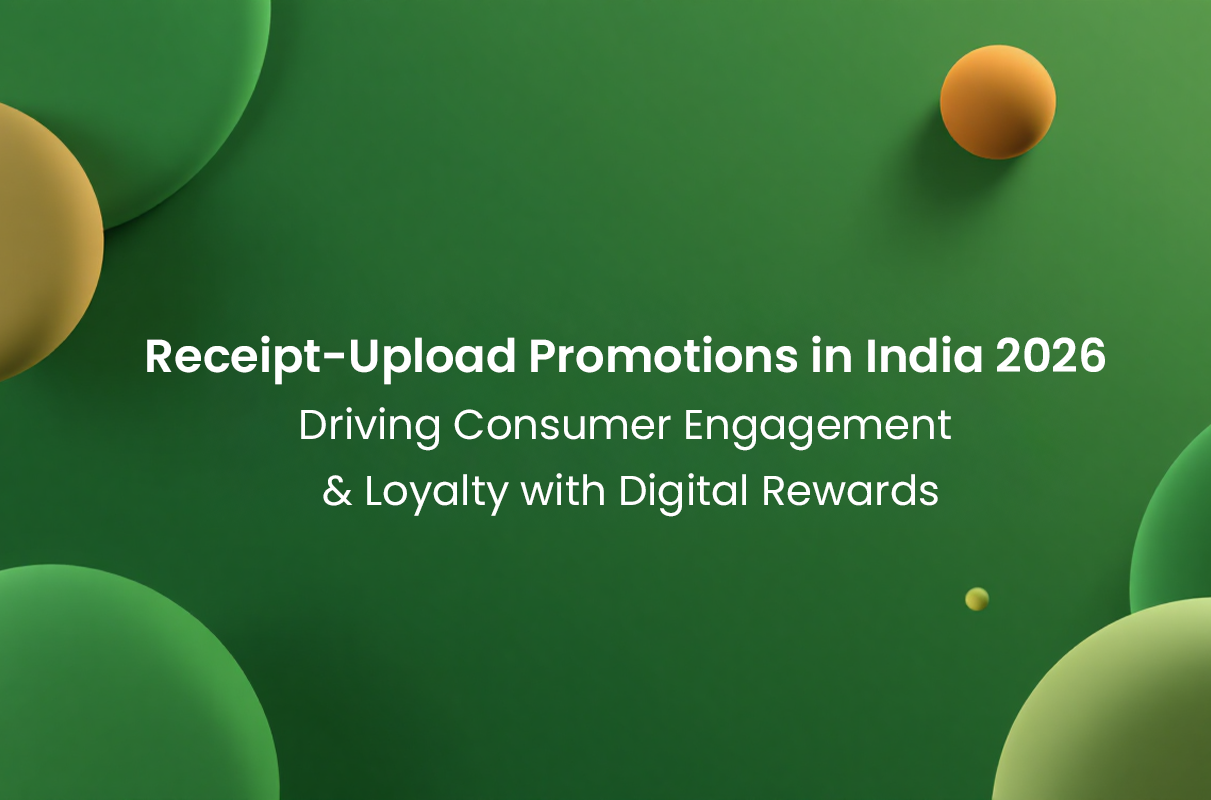
Receipt-Upload Promotions in India 2026: Driving Consumer Engagement and Loyalty with Digital Rewards
Explore receipt-upload promotions in India 2026, their growing consumer adoption, and how RewardPort enables seamless, rewarding campaigns with digital-first solutions.
Receipt-Upload Promotions in India 2026: Driving Consumer Engagement and Loyalty with Digital Rewards
Receipt-upload promotions—where consumers upload proof of purchase receipts digitally to unlock rewards—are rapidly gaining traction across India’s consumer market in 2025 and beyond. This proven activation leverages India’s soaring digital payments ecosystem and widespread smartphone adoption to engage shoppers, deepen loyalty, and incentivize repeat purchases. From FMCG brands to retail chains, these promotions are evolving into multi-channel, omnipresent campaigns that connect physical shopper behavior to digital rewards instantly.
Context and Industry Trends Shaping Consumer Adoption
The last few years have seen explosive growth in digital payment platforms like UPI, Paytm, Amazon Pay, and others, which now serve as critical enablers for receipt-upload campaigns. India’s urban and increasingly rural consumers are comfortable scanning receipts via apps or uploading photos through WhatsApp-led flows, expecting seamless and immediate rewards. According to recent market data, promotions combining cashback, discount codes, and experiential rewards dominate sales advertising, often accounting for over 50% of activations in print and digital promotion spaces by late 2023. This mix resonates well with consumers seeking both instant gratification and aspirational prizes. Moreover, brands are embedding receipt-upload mechanics into loyalty programs to convert one-time buyers into repeat customers. Channel partners and dealers are also incentivized via digital credits or spiffs to promote these campaigns at the point of sale, creating a robust ecosystem that ties consumer behavior with partner engagement. This omnichannel integration ensures broader adoption and sustained momentum into 2026.
RewardPort’s Perspective and Execution Expertise
At RewardPort, we recognize receipt-upload promotions as a cornerstone of India’s future-facing customer engagement strategies. Our plug-and-play modules enable brands to deploy campaigns that drive acquisition, repeat purchase, and up-sell by combining instant cashback, digital vouchers, and experiential rewards such as spa visits or movie tickets—drawing from our comprehensive rewards catalog. Our solutions emphasize ease of participation through mobile apps and WhatsApp, supported by robust invoice validation backend systems that ensure fraud mitigation and data accuracy. By integrating dealer and channel incentives alongside consumer rewards, RewardPort fosters a seamless ecosystem that magnifies impact across the value chain. Case studies within the industry reveal compelling uplifts: FMCG brands partnering with payments players have recorded over 20% increases in repeat purchases during receipt-upload campaigns that reward digital cashback instantly. Retailers leveraging experiential tiers from RewardPort’s entertainment catalog have seen elevated engagement and footfall, particularly in premium urban segments.
Key Consumer Adoption Drivers for 2026 and Beyond
– Digital Payments Penetration: With UPI transactions exceeding 100 billion annually, digital receipt uploads are frictionless and widely accessible. – Omnichannel Loyalty Integration: Combining online and offline purchase data through receipts strengthens personalized marketing. – Reward Diversity: Consumers gravitate towards instant cashback, multi-brand voucher catalogs, and experiences, all easily redeemable. – Channel Partner Engagement: Incentivizing dealers and retailers accelerates adoption at grassroots levels. – Mobile-First and Vernacular Accessibility: Simplified app and WhatsApp-based uploads drive inclusion across urban and rural areas alike.
Embracing Receipt-Upload Promotions with RewardPort
Receipt-upload promotions represent a dynamic confluence of digital innovation, consumer psychology, and multi-tier incentives within India’s rapidly evolving retail landscape. RewardPort’s expertise in orchestrating such campaigns—leveraging digital-first execution models and a wide-ranging reward catalog—positions brands to thrive in this vibrant space. As adoption accelerates through 2026, marketers embracing these campaigns with precision and agility will unlock significant growth in customer acquisition, loyalty, and channel engagement.
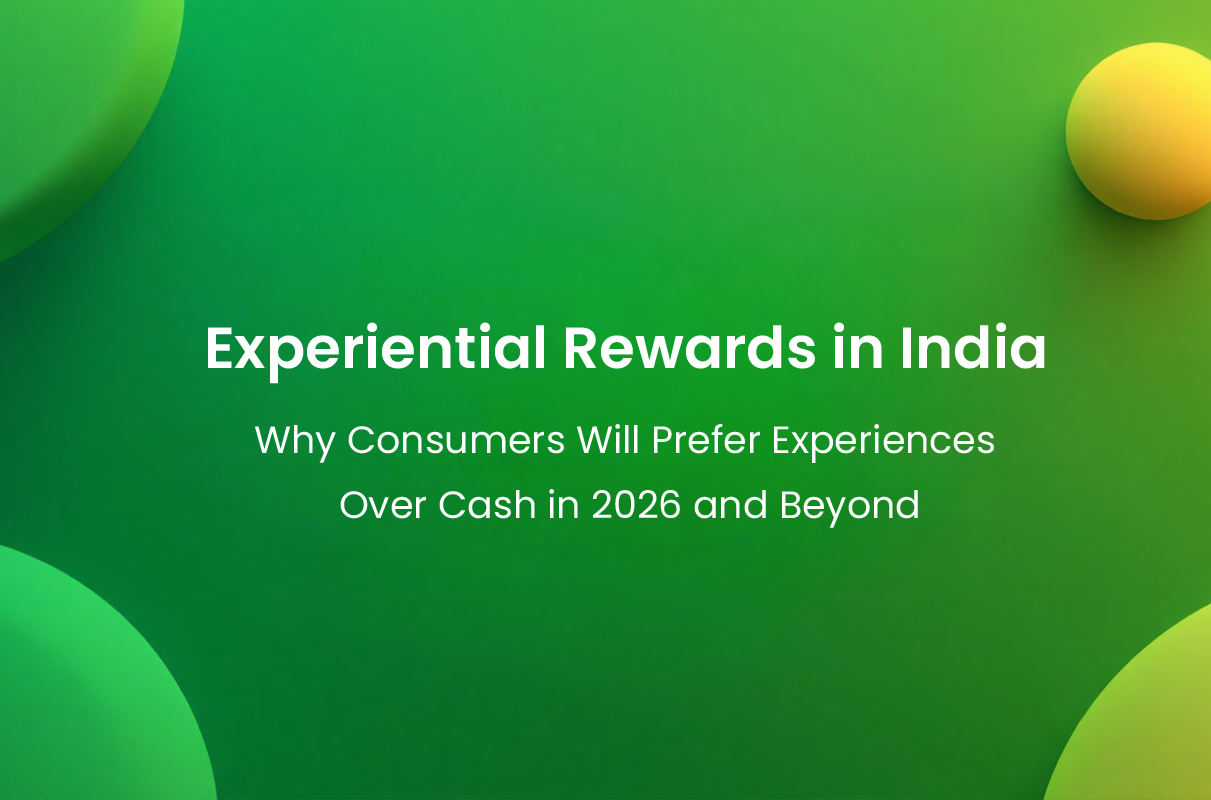
Experiential Rewards in India: Why Consumers Prefer Experiences Over Cash in 2026 and Beyond
Explore why experiential rewards are surpassing cash in popularity in India’s loyalty and incentive programs, driving deeper engagement and brand loyalty.
Experiential Rewards in India: Why Consumers Prefer Experiences Over Cash in 2026 and Beyond
In the evolving landscape of consumer promotions and loyalty programs in India, a marked shift is underway. Consumers increasingly favor experiential rewards—such as travel, wellness experiences, and exclusive events—over traditional cash or cashback incentives. This trend, driven by the desire for memorable and personalized engagement, is reshaping how brands connect with customers, channel partners, and employees in 2026 and beyond.
The Rise of Experiential Rewards in India’s Loyalty Market
The Indian loyalty program market is booming, projected to grow from around USD 4.3 billion in 2025 to an estimated USD 17.1 billion by 2035. This surge is powered by a heightened preference for tech-enabled, AI-driven experiential rewards that provide consumers more than transactional value. For instance, consumers in urban India seek not just discounts but unique moments—like wellness retreats, travel upgrades, or access to premium entertainment—that foster emotional loyalty and a deeper brand connection.
Why Consumers Prefer Experiences Over Cash
Several factors explain this consumer pivot:
– Emotional Engagement: Experiential rewards create lasting memories and social sharing opportunities, which cash cannot deliver.
– Personalization: Tailored experiences that reflect individual tastes and interests feel more valuable and exclusive.
– Wellness and Lifestyle Alignment: Combining digital rewards with wellness offerings such as spa packages or fitness subscriptions resonates strongly with millennial and Gen-Z consumers.
– Social Currency: Experiences offer stories and status symbols that money alone does not provide.
RewardPort’s Perspective: Integrating Experiential Rewards for Business Impact
At RewardPort, our extensive rewards catalog embraces this shift with curated offerings across travel (VacPac, AirPac), entertainment (movie tickets, OTT subscriptions), food, wellness, and cashback options seamlessly integrated into campaigns. Our platform supports innovative execution methods, including gamification, QR scan-to-win, and loyalty tiers, allowing brands to deliver experiential rewards that drive trial, repeat purchase, and deeper loyalty.
Case studies from the Indian market reveal that consumer promotions anchored around experiential rewards—including holiday gift certificates, wellness memberships, and exclusive event access—have shown improved engagement metrics and repeat purchase rates. For channel and dealer incentives, experiential rewards such as sponsored trips and curated experiences outperform traditional cash bonuses in motivating sustained performance and advocacy.
Leveraging Technology and Personalization
RewardPort leverages advanced data analytics and AI-driven personalization to match experiential reward offerings to the consumer profile, maximizing relevance and redemption rates. This approach is proving critical in India’s diverse market, enabling brands to balance aspirational rewards with mass appeal. The emerging trend toward hybrid digital-physical rewards, like app-based bookings for experiences and instant voucher redemption, further strengthens consumer excitement and perceived value.
Experiential Rewards are the Future of Loyalty in India
As India’s loyalty programs mature in this decade, experiential rewards will be central—not just as a gimmick, but as a strategic driver of emotional loyalty, customer lifetime value, and channel partner motivation. Brands that invest in immersive, personalized experiences through platforms like RewardPort will stand out in a crowded market, delivering measurable business impact and building authentic connections with their audiences.
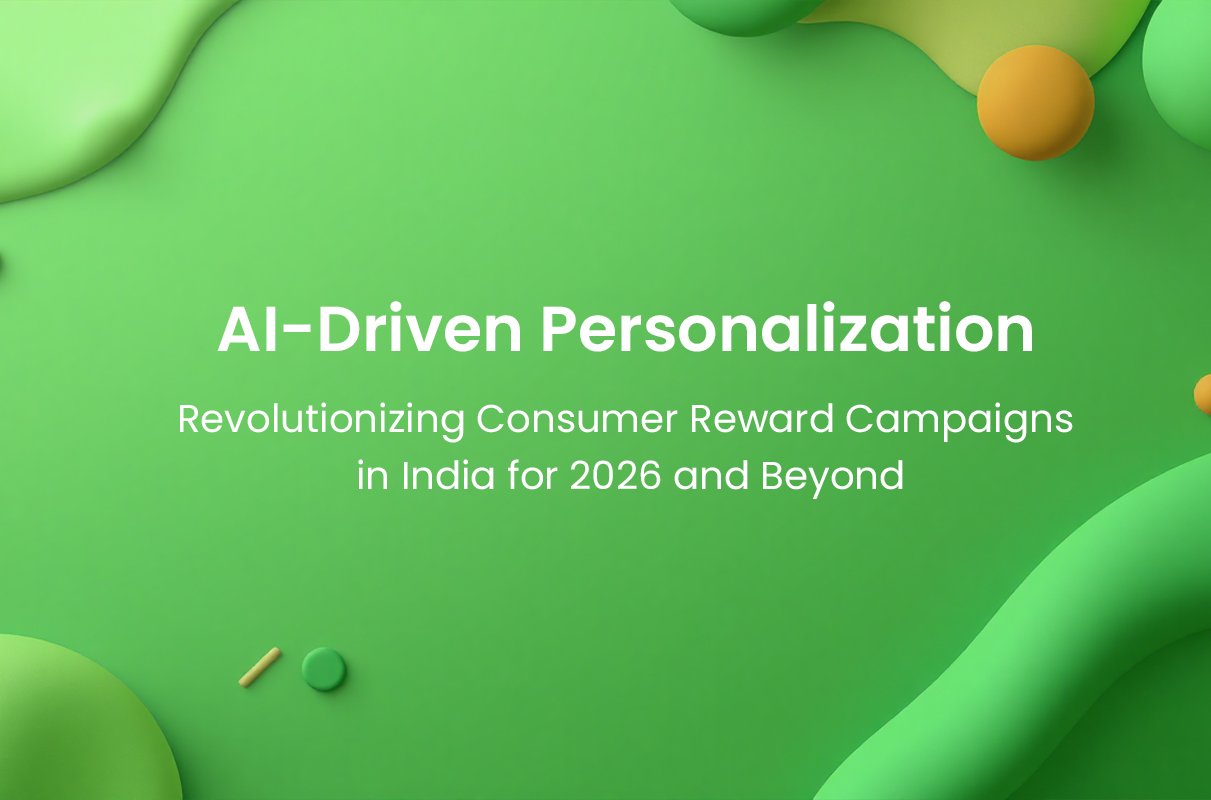
AI-Driven Personalization: Revolutionizing Consumer Reward Campaigns in India for 2026 and Beyond
Explore how AI-driven personalization is reshaping consumer reward campaigns in India with tailored promotions, loyalty programs, and RewardPort solutions.
AI-Driven Personalization: Revolutionizing Consumer Reward Campaigns in India for 2026 and Beyond
AI-driven personalization is rapidly transforming the landscape of consumer reward campaigns in India. With over 95% of Indian consumers now influenced by AI in their purchase decisions, brands are leveraging data analytics and machine learning to offer hyper-personalized rewards that increase engagement, loyalty, and repeat purchases. From digital loyalty programs to cashback campaigns, AI helps marketers reach consumers with relevant incentives that resonate deeply, creating a competitive edge in a diverse and dynamic market.
The Indian Market Landscape and Consumer Expectations
In the India-first context, consumers increasingly expect personalized experiences that reflect their preferences, purchase history, and lifestyle. Reports indicate that 81% of Indian consumers anticipate their favorite brands adopting generative AI for personalization by the end of 2024, pushing brands to innovate rapidly. This trend is especially visible in sectors like FMCG, financial services, and retail, where data-driven reward programs are now standard. AI’s ability to segment customers precisely and deliver instant, contextually relevant rewards enhances customer satisfaction and brand affinity.
Key Trends in AI-Powered Consumer Reward Campaigns
Several emerging trends define AI-driven personalization in consumer campaigns. First, the integration of real-time data analytics enables instant reward decisions tailored to individual behavior, such as AI-powered Scratch & Win or QR Scan to Win campaigns. Second, AI enhances loyalty programs by dynamically adjusting points, tiers, and multipliers based on consumer activity and preferences. Third, AI facilitates hybrid omnichannel experiences combining digital and offline activations, enabling seamless consumer journeys.
Moreover, privacy and data security concerns have led Indian brands to strike a balance between personalization and consumer trust, fostering transparency around data use while delivering value through personalized rewards.
RewardPort’s Perspective and Solutions
At RewardPort, we specialize in crafting AI-powered, tailor-made consumer promotion and loyalty programs uniquely suited for the Indian market. Our plug-and-play modules—such as Freebucks (points and instant redemption), RewardOne (customizable gift voucher engine), and Gamification Engine (with 100+ branded games)—enable brands to deploy sophisticated AI-driven campaigns swiftly and at scale.
We harness data analytics and AI integration to create high-impact campaigns, blending assured rewards like cashback or multi-brand vouchers with experiential travel prizes from our VacPac and AirPac catalogs. This approach delivers measurable results across the full consumer lifecycle: acquisition, trial, repeat purchase, upsell, and loyalty consolidation. For example, our campaigns with leading Indian brands have demonstrated increased consumer engagement and repeat purchase rates through such AI-personalized reward touchpoints.
Case Insights and Outcome Highlights
While respecting confidentiality, RewardPort’s collaborations highlight how AI-personalized campaigns have driven sales uplift and brand loyalty. Initiatives blending AI with instant rewards have increased consumer retention, with some programs seeing a repeat purchase uplift nearing 27%. Our channel and dealer incentive campaigns leveraging AI analytics have also raised trade engagement, showing the broad applicability of personalized reward strategies.
AI-driven personalization in consumer reward campaigns is not just a futuristic concept but a present-day imperative for brands in India. By enabling hyper-personalized, data-backed incentives and seamless redemption experiences, AI fosters deeper consumer connections and stronger brand loyalty. RewardPort’s comprehensive suite of AI-enabled solutions and rich rewards catalog position brands to thrive in 2026 and beyond by meeting evolving consumer expectations with precision and creativity.
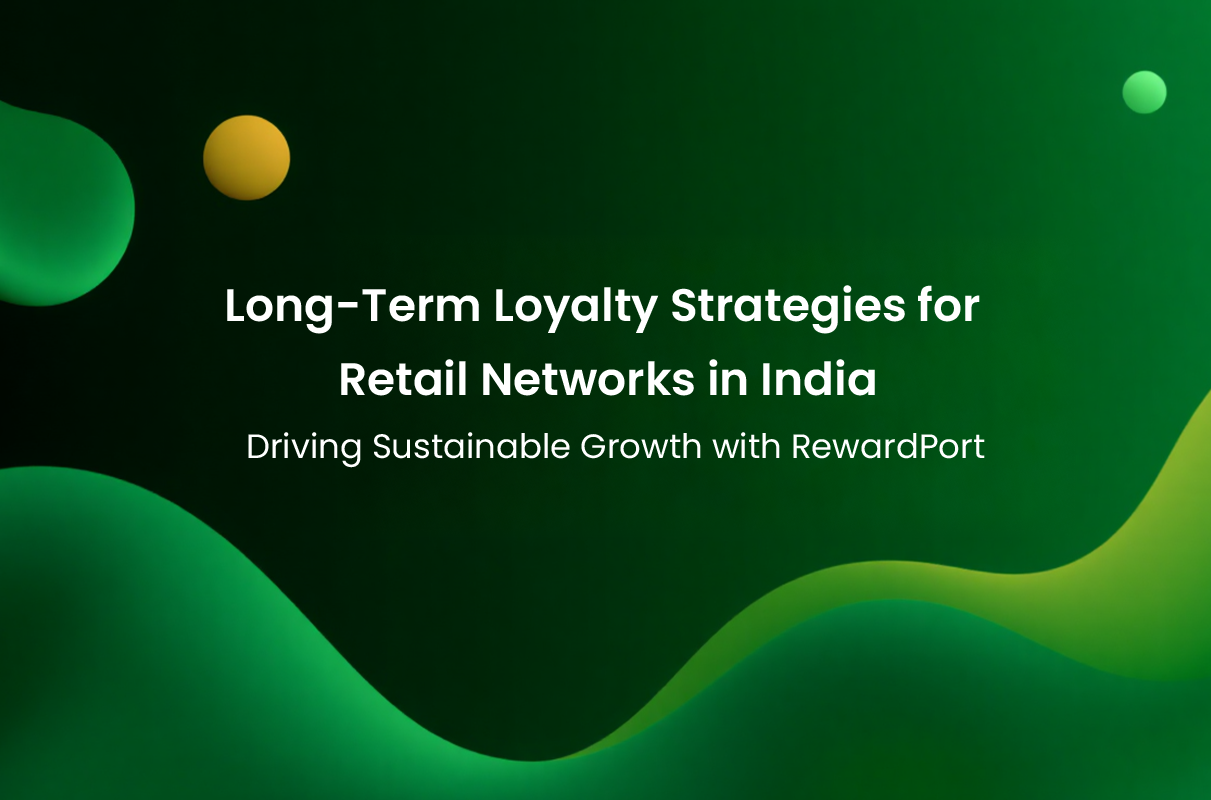
Long-Term Loyalty Strategies for Retail Networks in India: Driving Sustainable Growth with RewardPort
In the fast-evolving Indian retail landscape, fostering long-term customer and channel loyalty has become indispensable for sustainable growth. By 2026, the loyalty market in India is expected to exceed US$3.9 billion, fueled by rising smartphone penetration, digital payment adoption, and shifting consumer expectations. Retailers must implement sophisticated, data-driven loyalty strategies that blend personalization, omnichannel engagement, gamification, and meaningful rewards. RewardPort, as India’s specialist in consumer promotions, loyalty programs, and channel incentives, enables businesses to harness these trends through proven solutions and curated reward catalogs.
Long-term loyalty strategies today center on personalized, mobile-first, and digital-first approaches. Customers crave relevance — programs powered by AI analytics leverage purchase data and behavior patterns to deliver customized offers and rewards. This approach significantly enhances repeat purchase rates and lifetime customer value. RewardPort’s platform facilitates integration with CRM/ERP systems, empowering retailers to automate personalized promotions seamlessly across online and offline channels.
Gamification is another proven driver of engagement. Incorporating digital games such as spin-the-wheel, scratch & win, or branded trivia injects excitement and drives deeper interaction with loyalty schemes. RewardPort’s gamification engine offers over 100 branded games tailored to brand tone and audience that deliver a 50%+ uplift in participation. Coupled with instant gratification rewards like cashback or multi-brand vouchers, these elements cultivate habitual engagement.
Omnichannel loyalty programs are crucial to bridge the offline-online divide, enabling effortless earning and redemption of points or rewards regardless of sales channel. Retailers using such models often see 40% higher program participation. RewardPort’s Channely module supports dealer and channel partner incentive programs with CRM connectivity, optimizing engagement across the distribution network.
The rewards catalog plays a strategic role in driving loyalty. Modern Indian consumers and B2B partners increasingly prefer flexibility and choice—ranging from experiential rewards like travel (VacPac, AirPac), movie tickets (CineRewardz), and dining vouchers to essentials, wellness, and digital subscriptions. RewardPort’s extensive catalog with 150,000+ experience options and thousands of partner outlets allows brands to curate reward mixes that resonate deeply with their target segments.
Sustainability-linked promotions are gaining traction, reflecting growing consumer consciousness in India. Campaigns that incentivize eco-friendly actions such as packaging returns or supporting green products boost brand sentiment and retention. RewardPort has facilitated successful green loyalty initiatives delivering measurable impact on customer engagement.
On the channel side, multi-tiered incentive programs for dealers and partners drive loyalty and sales push effectively. RewardPort’s Channely solution integrates with client ERPs to create milestone-based, tiered rewards that improve payment cycles and strengthen distributor relationships, as seen in multiple client engagements.
In summary, the future of retail loyalty in India demands integrating technology and behavioral insights to create engaging, personalized, omnichannel loyalty ecosystems. RewardPort’s holistic solutions—from AI-based program design and gamification to a rich rewards catalog and channel partner incentives—equip brands to build lasting loyalty. Embracing these strategies will drive sustained growth and competitive advantage in India’s dynamic retail environment through 2026 and beyond.
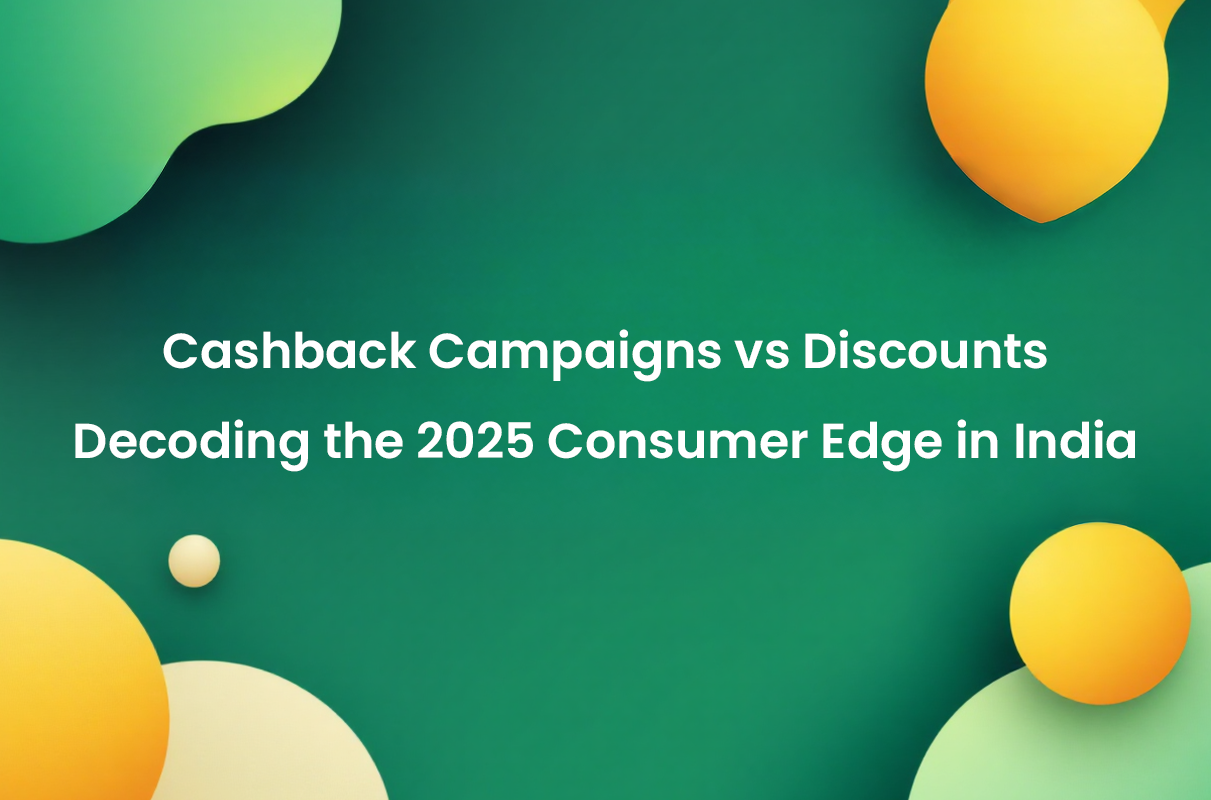
Cashback Campaigns vs Discounts: Decoding the 2025 Consumer Edge in India
As India’s consumer market evolves rapidly toward digital-first engagement, the promotional strategies that marketers adopt must align with shifting preferences and technology trends. Among these strategies, cashback campaigns are increasingly outshining traditional discounts, particularly in driving online shopping and customer loyalty. However, both remain indispensable tools when used thoughtfully in combination.
Consumer behavior in India shows a compelling tilt towards cashback offers. Recent studies indicate that 50% of Indian consumers cite cashback as a key motivator for online purchases, slightly higher than the 46% who prioritize discounts. This preference is most pronounced among younger, metro-based shoppers who value the tangible, wallet-friendly benefits cashback delivers. Conversely, older segments like Gen X still retain a strong affinity for discounts. This generational split suggests that a hybrid strategy addressing diverse consumer needs is optimal.
From a business standpoint, cashback adoption in India has surged with over 22% of online purchases involving cashback incentives. The festive seasons and large sale events see concerted use of combined discounts and cashback mechanisms, which have proven to amplify average order values and customer retention. RewardPort’s experience aligns with these insights: our clients leveraging dual approaches — integrating cashback rewards with targeted discounts — achieve superior engagement and repeat business.
In the channel and trade marketing domain, cashback outpaces discounts by offering faster, more trackable digital payouts, enhancing dealer and retailer incentives programs through real-time rewards. This digital agility supports more personalized reward experiences, an area RewardPort specializes in through modular plug-and-play solutions such as Freebucks points and RewardOne gift voucher engines, which facilitate instant redemption and multilayered reward structures.
The 2025 playbook for promotions in India includes embracing cashback as a cornerstone, especially in high-growth categories like electronics, fashion, and digital services, where consumer responsiveness is highest. Discounts retain their power for price-sensitive groups and initial product penetration but achieve best results when layered with cashback and gamification elements. RewardPort’s catalog, featuring OTT subscriptions, movie tickets, dining, and travel vouchers, supports these mixed reward strategies, delivering experiential value alongside monetary incentives.
Moreover, experiential and wellness rewards are gaining traction as consumers look beyond immediate savings to enrich their lifestyle, a trend RewardPort addresses with rewards such as holiday gift certificates and spa/salon vouchers. Programs incorporating these elements alongside cashback create compelling, differentiated value propositions that resonate with premium segments and foster long-term loyalty.
In sum, cashback campaigns are not merely a fad but a transformative force in India’s consumer promotions landscape for 2025 and beyond. Integrated with discounts and digital engagement tools, cashback drives measurable growth, repeat purchase behavior, and enhanced partnership outcomes. RewardPort stands ready with proven, scalable solutions to help B2B marketers, trade leaders, and HR/channel managers effectively navigate this dynamic landscape and unlock the full potential of their promotions strategies.

Instant Rewards Revolution: 5 FMCG Giants Share Their Winning Tiered Dealer Program Strategies for 2025-26
The FMCG industry is experiencing a seismic shift in how brands engage with their supply chain partners. Gone are the days when quarterly bonuses and annual recognition ceremonies could sustain dealer motivation. Today’s supply chain partners demand immediate gratification, personalized experiences, and transparent reward systems that recognize their contributions in real-time.
Recent industry research reveals that 87% of FMCG companies are planning to overhaul their dealer incentive programs by 2026, with instant rewards and tiered recognition systems taking center stage. This transformation isn’t just about keeping up with trends—it’s about survival in an increasingly competitive marketplace where supply chain efficiency can make or break brand success.
The Death of Traditional Dealer Programs
Traditional FMCG dealer programs are failing at an alarming rate. Industry data shows that 68% of supply chain partners report feeling disconnected from their brand partners, primarily due to delayed reward recognition and one-size-fits-all incentive structures. The conventional approach of annual targets and quarterly payouts simply doesn’t align with the modern business pace.
“We were losing our best distributors to competitors who offered more responsive reward systems,” shares a senior supply chain director from a leading FMCG brand. “The three-month delay between achievement and recognition was killing our momentum.”
This disconnect has led to decreased loyalty, higher partner churn rates, and ultimately, weakened distribution networks. Forward-thinking FMCG companies have recognized this crisis and are pioneering innovative solutions that blend instant gratification with strategic long-term engagement.
The Instant Rewards Revolution
Instant rewards represent more than just faster payments—they embody a fundamental shift toward real-time recognition and continuous engagement. Modern FMCG supply chain partners operate in fast

CPG Channel Performance Analytics Exposed: The Data-Driven Strategies Boosting Partner ROI by 156%
The Consumer Packaged Goods (CPG) industry is undergoing a revolutionary transformation, and it’s happening in the most unexpected place: the analytics dashboard. While brands have historically relied on gut instinct and basic sales metrics to manage their channel partnerships, industry leaders are now harnessing sophisticated channel performance analytics to unlock unprecedented partner ROI growth.
The numbers speak for themselves. CPG companies implementing advanced analytics-driven partner programs are seeing an average 156% increase in partner ROI, with some reporting gains as high as 240%. But these aren’t just statistics—they represent a fundamental shift in how the industry approaches B2B loyalty solutions and partner engagement strategies for 2025-26.
The Analytics Awakening in CPG
For decades, CPG channel management operated in a data vacuum. Brands would distribute products, offer basic incentives, and hope for the best. Traditional metrics like sales volume and basic margin calculations provided limited insights into partner behavior, motivation drivers, or optimization opportunities.
Today’s CPG landscape demands precision. With shrinking margins, intensified competition, and evolving consumer demands, brands can no longer afford to operate channel programs based on assumptions. Channel performance analytics has emerged as the secret weapon that separates industry leaders from laggards.
“We went from managing 2,000 retail partners with spreadsheets to having real-time insights into every partner’s performance, engagement levels, and potential,” explains a channel director at a Fortune 500 CPG company. “The transformation in our partner relationships has been remarkable.”
The Data Revolution: Beyond Basic Metrics
Modern CPG channel performance analytics extends far beyond traditional sales tracking. Industry pioneers are leveraging multi-dimensional data analysis that encompasses:
Behavioral Analytics: Understanding how partners interact with digital platforms, which incentives drive engagement, and what communication channels yield the highest response rates. Advanced analytics reveal that personalized digital engagement increases partner satisfaction scores by 89%.
Predictive Performance Modeling: Using AI-powered algorithms to identify which partners are likely to exceed targets, which ones need additional support, and which new partners have the highest success potential. This predictive approach has helped leading CPG brands reduce partner churn by 43%.
Real-Time Engagement Scoring: Continuous monitoring of partner engagement across multiple touchpoints, from training completion rates to reward redemption patterns. Companies utilizing engagement scoring report 67% higher partner retention rates.
ROI Attribution Analysis: Sophisticated tracking that connects specific incentive investments to measurable business outcomes, enabling precise program optimization. This granular analysis has allowed top performers to reallocate incentive budgets for maximum impact.
The Gamification Integration Game-Changer
One of the most significant trends for 2025-26 is the integration of gamification elements within analytics-driven partner programs. CPG leaders are discovering that when performance data is presented through gamified experiences, partner engagement skyrockets.
Interactive dashboards that transform sales targets into achievement levels, leaderboards that create healthy competition among regional partners, and milestone celebrations that provide instant recognition are revolutionizing the partner experience. A major beverage CPG company reported that gamifying their analytics dashboard increased daily partner platform usage by 340%.
Instant rewards triggered by real-time performance analytics are proving particularly effective. When partners can see their achievements immediately reflected in both their performance scores and reward balances, motivation and satisfaction levels increase dramatically.
AI-Powered Insights: The 2025-26 Advantage
Artificial Intelligence is transforming how CPG companies interpret and act on channel performance data. Machine learning algorithms analyze vast datasets to identify patterns invisible to human analysts, providing actionable insights that drive strategic decisions.
Predictive Analytics: AI systems can forecast partner performance trends, seasonal variations, and market opportunities with remarkable accuracy. One household goods CPG brand uses AI predictions to proactively adjust partner incentives, resulting in 78% more consistent quarterly results.
Personalization at Scale: Advanced algorithms analyze individual partner preferences, performance history, and market conditions to create personalized incentive packages. This level of customization, previously impossible to manage manually, is driving unprecedented partner satisfaction levels.
Automated Optimization: AI continuously monitors program performance and automatically adjusts parameters to maximize ROI. This “always-on” optimization approach ensures that partner programs remain effective even as market conditions change.
Multi-Channel Loyalty: The Integration Imperative
Modern CPG companies operate through diverse channel networks including traditional retail, e-commerce platforms, wholesale distributors, and direct-to-consumer channels. Multi-channel loyalty programs powered by comprehensive analytics ensure consistent partner experiences across all touchpoints.
Leading CPG brands are implementing unified analytics platforms that track partner performance across multiple channels, providing holistic views of partner contributions and enabling coordinated incentive strategies. This integrated approach has proven particularly effective in managing complex partner ecosystems where individual partners may operate across multiple channels.
Experiential Rewards: The Emotional Connection
While data drives decision-making, successful CPG partner programs recognize that emotional connections create lasting loyalty. Analytics-informed experiential travel rewards and unique recognition experiences are becoming increasingly popular for 2025-26.
Top-performing partners are being rewarded with curated travel experiences, exclusive industry events, and VIP access to product launches. Analytics help identify which partners value experiential rewards most highly, ensuring optimal allocation of premium incentive budgets.
Implementation Roadmap: Getting Started
For CPG companies ready to embrace analytics-driven partner programs, industry experts recommend a phased approach:
Phase 1: Data Foundation – Establish comprehensive data collection across all partner touchpoints, ensuring data quality and integration capabilities.
Phase 2: Basic Analytics – Implement fundamental performance tracking and reporting systems, focusing on key metrics that directly impact business outcomes.
Phase 3: Advanced Insights – Deploy AI-powered analytics tools, predictive modeling, and automated optimization systems.
Phase 4: Experience Integration – Incorporate gamification, instant rewards, and experiential elements based on analytical insights.
The Competitive Advantage Reality
CPG companies that delay analytics adoption risk being left behind. Industry research indicates that brands with advanced channel performance analytics capabilities are gaining market share at the expense of competitors still relying on traditional approaches.
The partner experience gap is widening rapidly. Partners who work with analytics-enabled CPG brands report significantly higher satisfaction levels, stronger brand loyalty, and greater willingness to invest in joint growth initiatives.
Future-Proofing Partner Relationships
As we move into 2025-26, the importance of data-driven partner programs will only intensify. Consumer behavior continues evolving, new channels emerge regularly, and competitive pressures increase constantly. CPG companies with robust analytics capabilities will be better positioned to adapt quickly and maintain strong partner relationships.
The most successful CPG brands view channel performance analytics not as a technology investment, but as a strategic imperative that transforms how they understand, engage, and grow with their partners.
The question isn’t whether to embrace analytics-driven partner programs—it’s how quickly you can implement them before competitors gain an insurmountable advantage. The 156% ROI improvement isn’t just a statistic; it’s a preview of what’s possible when data meets partnership strategy in the modern CPG landscape.

What India’s Top 1% of Companies Do Differently: The Secret Channel Incentive Strategies That Deliver 300% Higher Partner Loyalty
Here’s the thing about the top 1%.
They don’t just do things better. They do different things entirely.
While 99% of Indian companies are playing checkers with their channel partners—moving pieces around the same tired board of commissions and bonuses—the top 1% are playing chess. Multi-dimensional chess. With pieces most companies don’t even know exist.
I’ve spent the last eighteen months studying these outliers. Companies that somehow retain 97% of their dealers year after year. Brands that have waiting lists of distributors begging to partner with them. Organizations where channel partners actually refer competitors’ best dealers to them.
What I discovered will change how you think about every relationship in your business.
The Great Lie We Tell Ourselves
Most executives believe channel partner loyalty comes from three things: good products, fair margins, and timely payments.
This is not just wrong. It’s dangerously wrong.
Because while you’re optimizing for “fair” margins, the top 1% are creating unfair advantages. While you’re focusing on product features, they’re designing experiences. While you’re managing relationships, they’re engineering ecosystems.
The brutal truth? Your channel partners don’t care about your products nearly as much as you think they do.
They care about their businesses. Their growth. Their problems. Their dreams.
The top 1% figured this out first.
The 1% Playbook: Eight Strategies That Change Everything
Strategy 1: They Manufacture Scarcity (But Not Where You Think)
Everyone knows scarcity drives value. But here’s what most miss: the top 1% don’t create scarcity around their products.
They create scarcity around their partnership.
While competitors accept any dealer who meets basic criteria, the top 1% make partnership feel like membership in an exclusive club. They have application processes. Waiting lists. Performance standards that aren’t just maintained—they’re elevated annually.
One textile manufacturer I studied has a 14-month waiting list for new dealers. Not because they can’t onboard faster. Because exclusivity creates desire. And desire creates commitment.
The result? Their dealers fight to maintain partnership status. They don’t just meet targets—they exceed them to prove worthiness.
When partnership feels precious, partners act precious.
Strategy 2: They Hack Human Psychology (Legally)
The top 1% understand something fundamental about human nature: people don’t work for money. They work for meaning, status, and progress.
So they don’t just pay their partners. They promote them.
Not job promotions. Status promotions.
They create elaborate tier systems that feel less like business categories and more like achievement levels in a game. Bronze, Silver, Gold isn’t enough. They have names. Stories. Rituals.
“Regional Champions.” “Market Pioneers.” “Elite Circle.”
Each level comes with tangible benefits, yes. But more importantly, it comes with identity. When someone introduces themselves as a “Platinum Partner” or “Chairman’s Circle Member,” they’re not stating a business relationship. They’re declaring their status.
Human beings will work harder for status than money. The top 1% weaponize this.
Strategy 3: They Solve Problems Partners Didn’t Know They Had
Average companies respond to partner requests. The top 1% anticipate them.
They invest heavily in understanding not just what their partners do, but what keeps them awake at 3 AM. Then they build solutions for problems partners haven’t even articulated yet.
A consumer electronics company I studied noticed their dealers struggled with customer service after sales. Instead of training dealers on customer service, they built a shared customer service platform. Dealers could offer premium after-sales support without hiring additional staff.
The dealers thought they needed better margins. What they actually needed was competitive differentiation.
The company that solves unspoken problems becomes indispensable.
Strategy 4: They Create Compound Value
Most incentive programs are transactional. Do X, get Y. Linear. Predictable. Boring.
The top 1% create compound value systems where benefits multiply over time.
Instead of annual bonuses, they offer equity-like programs where partner success accumulates. Performance in year one creates advantages in year two. Success in year two unlocks opportunities in year three.
They don’t just reward current performance. They invest in future potential.
One automotive company created a “Partnership Equity” program where dealers earn points for performance, but points appreciate over time and unlock increasingly valuable rewards. Five-year partners access benefits that one-year partners can’t even see.
This does something psychologically powerful: it makes leaving expensive. Not just financially—emotionally.
Strategy 5: They Engineer Peer Pressure
The most powerful force in human motivation isn’t top-down authority. It’s peer influence.
The top 1% engineer environments where high performance becomes socially contagious.
They create dealer advisory boards where top performers share strategies. They host exclusive events where success stories spread naturally. They build internal communities where partners celebrate each other’s wins.
But here’s the key: they don’t just facilitate connection. They amplify achievement.
Every success gets broadcast. Every milestone gets celebrated. Every breakthrough gets studied and shared.
When high performance becomes the social norm, average performance becomes socially unacceptable.
Strategy 6: They Invest in Dealer Dreams (Not Just Dealer Needs)
Here’s where it gets interesting.
The top 1% don’t just understand their partners’ businesses. They understand their partners’ aspirations.
They know the dealer who wants to expand into three new cities. The distributor whose daughter is studying business management. The partner who dreams of franchising his business model.
Then they build programs that help partners achieve these dreams.
Expansion loans at preferential rates. Scholarships for children of top performers. Business consultation for growth planning. Introduction to relevant networks and opportunities.
They become partners in life goals, not just business transactions.
When you help someone achieve their dreams, they don’t just stay loyal. They become evangelists.
Strategy 7: They Make Data Irresistible
Most companies give partners reports. The top 1% give them insights.
The difference? Reports tell you what happened. Insights tell you what to do next.
They invest in analytics that help partners make better decisions. Market intelligence that reveals opportunities. Customer behavior data that drives sales strategies. Competitive analysis that creates advantages.
But they don’t just provide data. They provide interpretation. Context. Actionable intelligence.
A pharmaceutical company I studied provides dealers with predictive analytics that forecast demand by geography and season. Dealers don’t just know what to stock—they know when and where to stock it.
Information becomes power. Power creates dependency. Dependency ensures loyalty.
Strategy 8: They Create Shared Ownership
The ultimate strategy is the most counterintuitive.
The top 1% give their partners a voice in the very programs designed to motivate them.
They don’t design incentive programs in boardrooms and push them down. They co-create them with partners. They establish feedback loops. They iterate based on real-world results.
This does something remarkable: it transforms partners from program participants into program owners.
When people help create something, they become invested in its success. When they’re invested in success, they work to ensure it.
The Multiplier Effect
Here’s what happens when you implement these strategies:
Your partners don’t just perform better. They recruit better partners for you. Your channel doesn’t just grow—it upgrades itself.
The top 1% don’t have dealer recruitment programs. They have dealer referral waiting lists.
They don’t fight for market share. Market share gravitates toward them.
They don’t compete on margins. They compete on value creation.
And they win. Consistently. Predictably. Sustainably.
The Real Secret
But here’s the deepest insight from studying the top 1%:
They don’t think about channel incentives as marketing programs or cost centers.
They think about them as relationship investments. Partnership equity. Competitive moats.
They understand that in a world where products can be copied overnight, distribution relationships are the last sustainable advantage.
So they don’t just manage these relationships. They engineer them. Systematically. Intentionally. Relentlessly.
The question isn’t whether these strategies work. The question is whether you have the patience and discipline to implement them while your competitors chase quarterly numbers.
The top 1% play long games. They plant trees whose shade they may never enjoy. They invest in relationships that compound over decades.
That’s why they’re the top 1%.
That’s why they stay there.
Your Move
You have a choice.
You can keep playing the same game everyone else is playing. Competing on margins. Chasing quarterly numbers. Managing relationships instead of engineering them.
Or you can start playing a different game entirely.
The top 1% aren’t smarter than you. They’re not luckier than you. They’re not even better funded than you.
They just decided to play by different rules.
Rules they wrote themselves.
Rules that work.
The only question is: what game will you choose to play?
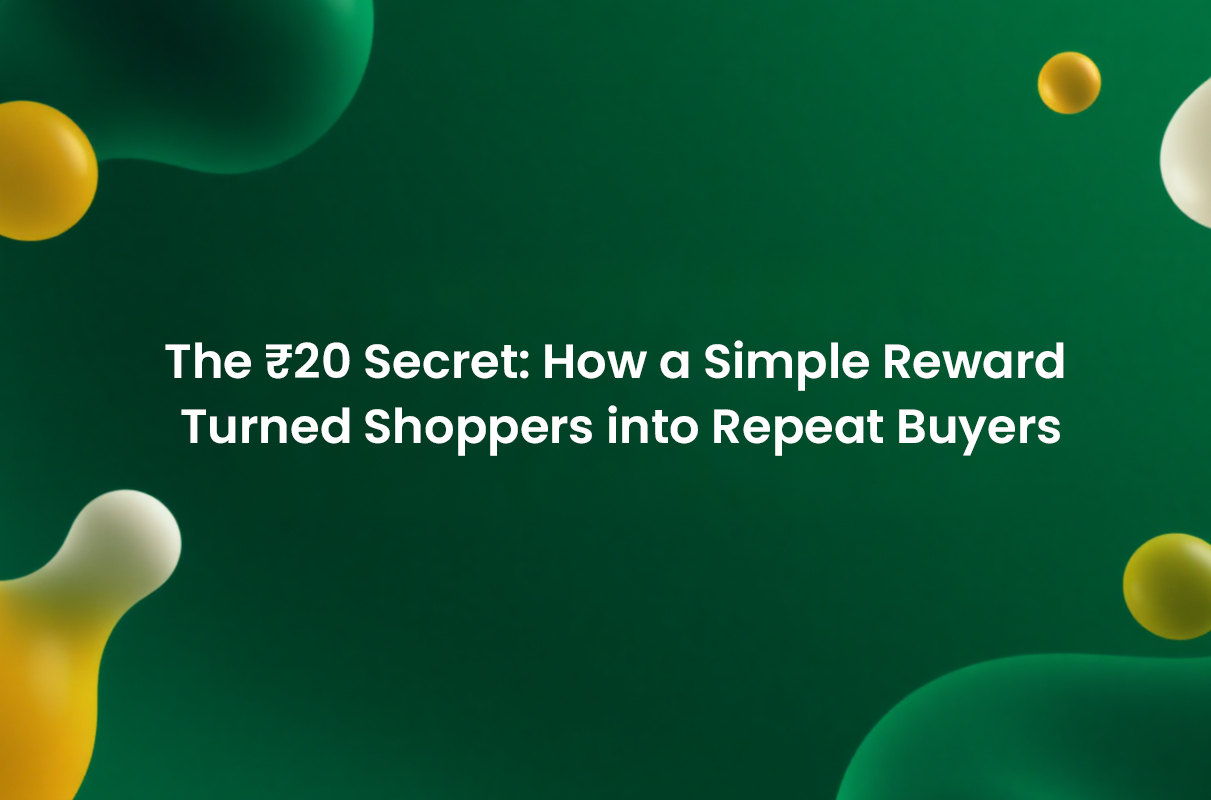
The ₹20 Secret: How a Simple Reward Turned Shoppers into Repeat Buyers
In the world of packaged foods, the retail shelf is a battlefield.
Every pack of flour, grains, or ready-to-cook mix is fighting for the same thing—your attention. And here’s the hard truth: most shoppers don’t think twice before switching brands if another one offers a better deal that day.
For brands in this space, loyalty is hard-won and easily lost. Margins are slim, product differentiation is minimal, and marketing budgets rarely stretch to extravagant promotions.
So, how do you make shoppers not just buy once—but keep coming back?
The Problem: Loyalty in a Low-Differentiation Market
The packaged foods category is a classic case of commoditization. Products are interchangeable, and brand switching is rampant. Even when consumers try a new brand and like it, the pull of the next price drop can be too strong to resist.
The challenge? Build brand stickiness without burning a hole in the budget.
The Breakthrough: Value at the Right Moment
The solution wasn’t about flashy giveaways or grand sweepstakes. It was about giving shoppers a reason to choose the brand again—and to do it now.
We created a direct-to-consumer cashback offer that was simple, transparent, and impossible to miss. Here’s how it worked:
- On-Pack Attention Grab: Bold callouts right on the packaging, visible the moment a shopper picked it up.
- Instant Digital Redemption: Scan, submit, and claim ₹20 cashback—right from a mobile phone.
- Assured Value: No luck draws. No “maybe you’ll win.” Every purchase came with a guaranteed reward.
This wasn’t just a promotional gimmick. It was a way to connect with consumers at the exact decision-making point—the store shelf—and give them immediate, tangible value.
Why It Worked
- Instant Gratification Wins: In a low-loyalty market, consumers respond strongly to rewards they can enjoy immediately.
- Simplicity Drives Participation: No complicated forms or delayed payouts—just a quick mobile process.
- Assured Rewards Build Trust: Every customer knew they’d get something back, making the brand feel generous and consumer-focused.
The Ripple Effect
Within weeks, the brand saw:
- A noticeable spike in secondary sales.
- Redemption rates that showed real consumer excitement.
- A stronger “value-first” perception that positioned it ahead of competitors.
The Takeaway for FMCG Marketers
In categories where loyalty is elusive, you don’t always need a massive prize to make an impact.
Sometimes, all it takes is a small, assured reward delivered instantly—right when the shopper is making a choice.
Because when consumers feel rewarded, they remember the brand that made them feel that way. And more often than not, they come back for more.
If you’re in FMCG and battling brand-switching, it might be time to trade big campaigns for small, smart rewards that work harder.

